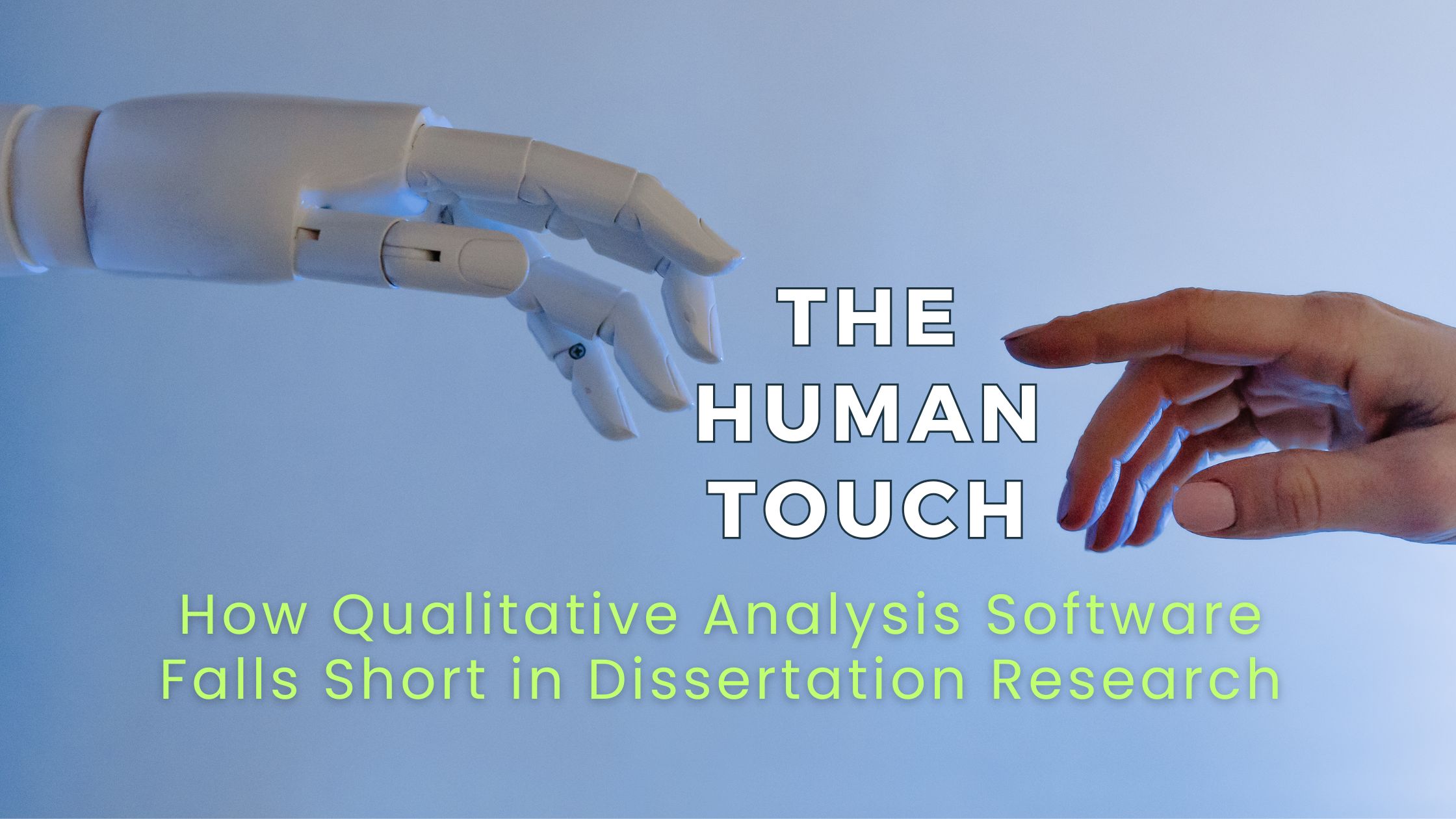
The Hidden Risks of Over-Relying on Qualitative Analysis Software
Qualitative analysis software can be an incredible tool for researchers, streamlining the often time-consuming process of organizing and coding data. But what happens when we ask machines to shoulder the entire burden of making sense of human experience? Over the years, I’ve seen the fallout of over-relying on these tools—and it’s sometimes devastating.
Here’s the reality: software can’t replace the critical thinking, intuition, and deep engagement that a researcher brings to the qualitative analysis process. I’ve worked with doctoral candidates who came to me after encountering major issues with qualitative analysis programs, such as:
- Incoherent Analyses from Outsourced Services: Some so-called analysts simply dump transcripts into software and deliver disjointed and nonsensical results. The end product often fails to answer the research questions and leaves candidates scrambling to clean up the mess.
- Over-Reliance on Automation: Researchers who rely exclusively on software for analysis often end up disconnected from their data. This not only compromises the quality of the analysis but also makes it difficult to defend during committee reviews.
What Software Can and Can’t Do
Let me be clear: qualitative analysis software has its place. Tools like NVivo, MAXQDA, and Atlas.ti can:
- Organize and store large volumes of data efficiently.
- Speed up coding by providing tools to group and categorize themes.
- Streamline query-building and visualization processes.
But (and this is a big but)… there’s a significant downside to relying solely on these tools. Machines can’t interpret the nuance of human experience—something qualitative research is built to uncover. Human emotions, cultural contexts, and subtle patterns in behavior often elude automated systems, no matter how advanced they may be.
Why Manual Engagement with Data Matters
The heart of qualitative research lies in the researcher’s connection to the data. Manual coding forces you to immerse yourself in the narratives and stories that your participants share, fostering a deep understanding of their experiences. This hands-on engagement is crucial for:
- Developing nuanced insights that align with your research questions.
- Capturing the complexity and richness of human experience.
- Building confidence to defend your findings during your dissertation defense.
When we allow software to take over entirely, we risk losing this connection. Worse, we may struggle to explain or justify findings that feel unfamiliar because we weren’t actively involved in producing them.
Striking the Right Balance
The key isn’t to abandon qualitative analysis software—it’s to use it wisely. Think of it as a tool to enhance, not replace, your analytical process. By combining the efficiency of software with the depth of manual coding, you can create analyses that are both rigorous and meaningful.
Final Thoughts
As a dissertation coach and analyst, I’ve seen firsthand how a thoughtful approach to qualitative analysis can make all the difference. Relying entirely on software might seem like a shortcut, but it often leads to more problems (and more work) in the long run. The best insights come from researchers who are deeply engaged with their data, balancing the power of technology with the irreplaceable human touch.
If you’re navigating the dissertation process and feeling overwhelmed by your analysis, let’s connect. Together, we can create a plan that ensures your findings are clear, coherent, and defensible.
